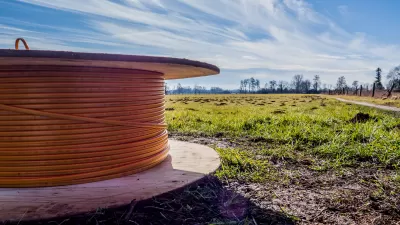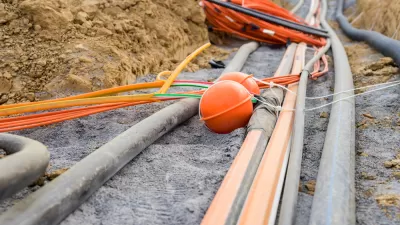A $4 billion federal program was supposed to provide access to job opportunities, education resources, health care and government services via high-speed Internet to rural Americans. Questions are now being raised about how that money has been spent.
Edward Wyatt investigates the growing controversy surrounding the Broadband Technology Opportunities Program, part of the Obama administration’s 2009 economic stimulus effort. The program was launched with an altruistic aim: "to extend high-speed Internet access to parts of the country that had little or none of it because private companies said it was too expensive to build." Only 40 percent of rural households have access to high-speed cable Internet, compared to 88 percent of urban households.
"But," writes Wyatt, "local phone companies have complained about waste or unfair competition, like using some of the grants to build fiber networks where they already exist — including, in Colorado, in the easily accessible eastern plains that include Agate — rather than where they are most needed, in rural mountain towns."
"Nationally, $594 million in spending has been temporarily or permanently halted, 14 percent of the overall program, and the Commerce Department’s inspector general has raised questions about the program’s ability to adequately monitor spending of the more than 230 grants."
FULL STORY: Waste Is Seen in Program to Give Internet Access to Rural U.S.

Planetizen Federal Action Tracker
A weekly monitor of how Trump’s orders and actions are impacting planners and planning in America.

Maui's Vacation Rental Debate Turns Ugly
Verbal attacks, misinformation campaigns and fistfights plague a high-stakes debate to convert thousands of vacation rentals into long-term housing.

Restaurant Patios Were a Pandemic Win — Why Were They so Hard to Keep?
Social distancing requirements and changes in travel patterns prompted cities to pilot new uses for street and sidewalk space. Then it got complicated.

In California Battle of Housing vs. Environment, Housing Just Won
A new state law significantly limits the power of CEQA, an environmental review law that served as a powerful tool for blocking new development.

Boulder Eliminates Parking Minimums Citywide
Officials estimate the cost of building a single underground parking space at up to $100,000.

Orange County, Florida Adopts Largest US “Sprawl Repair” Code
The ‘Orange Code’ seeks to rectify decades of sprawl-inducing, car-oriented development.
Urban Design for Planners 1: Software Tools
This six-course series explores essential urban design concepts using open source software and equips planners with the tools they need to participate fully in the urban design process.
Planning for Universal Design
Learn the tools for implementing Universal Design in planning regulations.
Heyer Gruel & Associates PA
JM Goldson LLC
Custer County Colorado
City of Camden Redevelopment Agency
City of Astoria
Transportation Research & Education Center (TREC) at Portland State University
Jefferson Parish Government
Camden Redevelopment Agency
City of Claremont





























